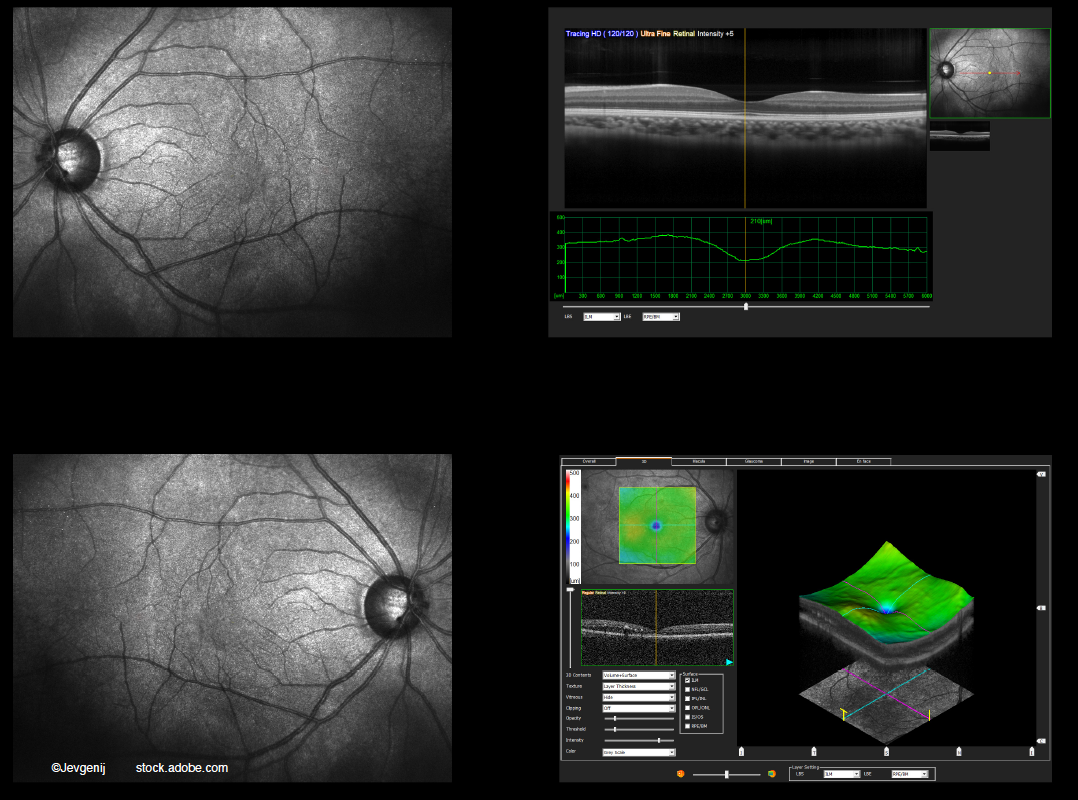Article
Large fluctuations in central subfield thickness in DME: predictor of worse VA?
Author(s):
The difference in visual acuities based on CST fluctuations in these patients with diabetic macular edema remained significant.
Eyes with larger fluctuations in central subfield thickness (CST) had worse VA compared with eyes with the fewest CST fluctuations in both protocols, according to investigators.

Large fluctuations in the central subfield thickness (CST) may predict worse visual acuity (VA) outcomes in patients with diabetic macular edema (DME),1 reported Matthew Starr, MD, and colleagues from the Wills Eye Hospital, Mid Atlantic Retina, Thomas Jefferson University, Philadelphia.
This conclusion was based on a post hoc analysis of a large cohort of eyes from the Diabetic Retinopathy Clinical Research Network protocols T and V clinical studies.
Starr and colleagues used the standard deviation of all of the recorded CSTs for each patient to quantify the fluctuations in the CSTs and the patients then were grouped into quartiles based on the standard deviations. The eyes were included in this analysis if a minimum of 3 CSTs and the 1-year VA were available. The main outcome measures were the VAs at the 1- and 2-year time points for each protocol, stratified by the standard deviation quartile, he explained.
Results of the cohort analysis
The study reported significant differences in VAs in the 1,197 eyes included in the study based on the CST standard deviation quartile of protocols T and V with adjustment for the mean baseline VA, baseline CST, lens status, hemoglobin A1c, and treatment arm.
In protocol T, at week 52, a nonsignificant -1.61 letter difference in the Early Treatment Diabetic Retinopathy Study letters was seen between quartiles 1 and 4 (p = 0.0986). However, by week 104, the letter difference increased to −3.59 letters, which reached significance (p = 0.0066).
In protocol V, the letter differences were significant at both time points: at week 52, the difference was −3.04 letters between quartiles 1 and 4 (p < 0.0001) and at week 104, the difference was −2.35 letters (p = 0.0005).
The difference in the VAs based on CST fluctuations in these patients with DME remained significant, even while adjusting for the mean baseline VA and CST levels, lens status, hemoglobin A1c, and treatment arm. “Eyes with larger fluctuations in CST had worse VA compared with eyes with the fewest CST fluctuations in both protocols,” they said.
Over time, such large fluctuations in CST may predict worse VA outcomes in patients with DME.
Reference
Starr MR, Salabati M, Mahmoudzadeh R, et al. Fluctuations in central subfield thickness associated with worse visual outcomes in patients with diabetic macular edema in clinical trial setting. Am J Ophthalmol. 2021;232:90-7; https://doi.org/10.1016/j.ajo.2021.06.030
Newsletter
Don’t miss out—get Ophthalmology Times updates on the latest clinical advancements and expert interviews, straight to your inbox.

Companies announce presentations at upcoming 2025 ARVO Annual Meeting




